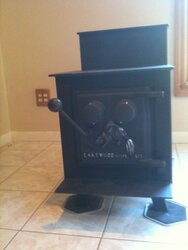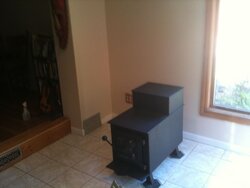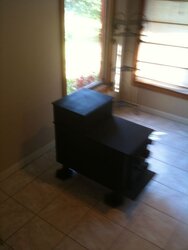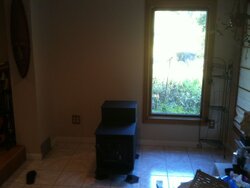Hello,
I purchased a refurbished lakewood stove and plan to install it in my sunroom. I fear I will not be able to track down a manual for this stove, so i will be installing per nfpa211 specifications (if anyone knows where I might get a manual that would be great). I am wondering about the clearance required between a window and a stove. I am planning on mounting a shield of some sort on the drywall to bring my required clearance down to 18". What is unclear to me is the requirement for a window. obviously, i will not be putting a shield over it. I have seen installations near windows, but I live in MA and anticipate being held to a higher standard by the inspectors than people in other states. as things are, the stove will be 18" from the edge of the window when installed. Additonally, I am wondering what people recommend for a shield, and where i would aquire it.
I purchased a refurbished lakewood stove and plan to install it in my sunroom. I fear I will not be able to track down a manual for this stove, so i will be installing per nfpa211 specifications (if anyone knows where I might get a manual that would be great). I am wondering about the clearance required between a window and a stove. I am planning on mounting a shield of some sort on the drywall to bring my required clearance down to 18". What is unclear to me is the requirement for a window. obviously, i will not be putting a shield over it. I have seen installations near windows, but I live in MA and anticipate being held to a higher standard by the inspectors than people in other states. as things are, the stove will be 18" from the edge of the window when installed. Additonally, I am wondering what people recommend for a shield, and where i would aquire it.





